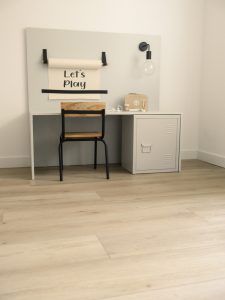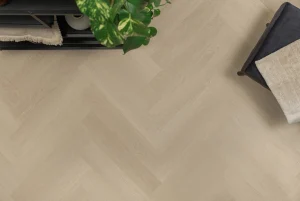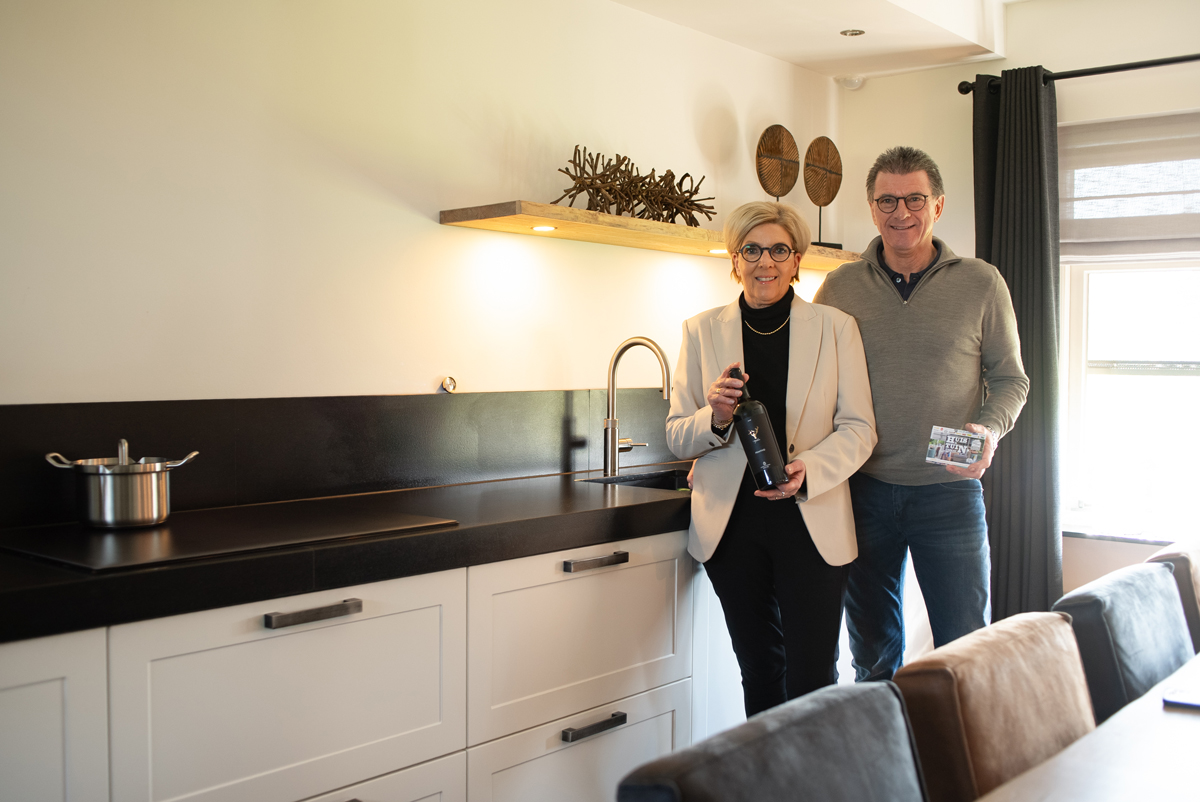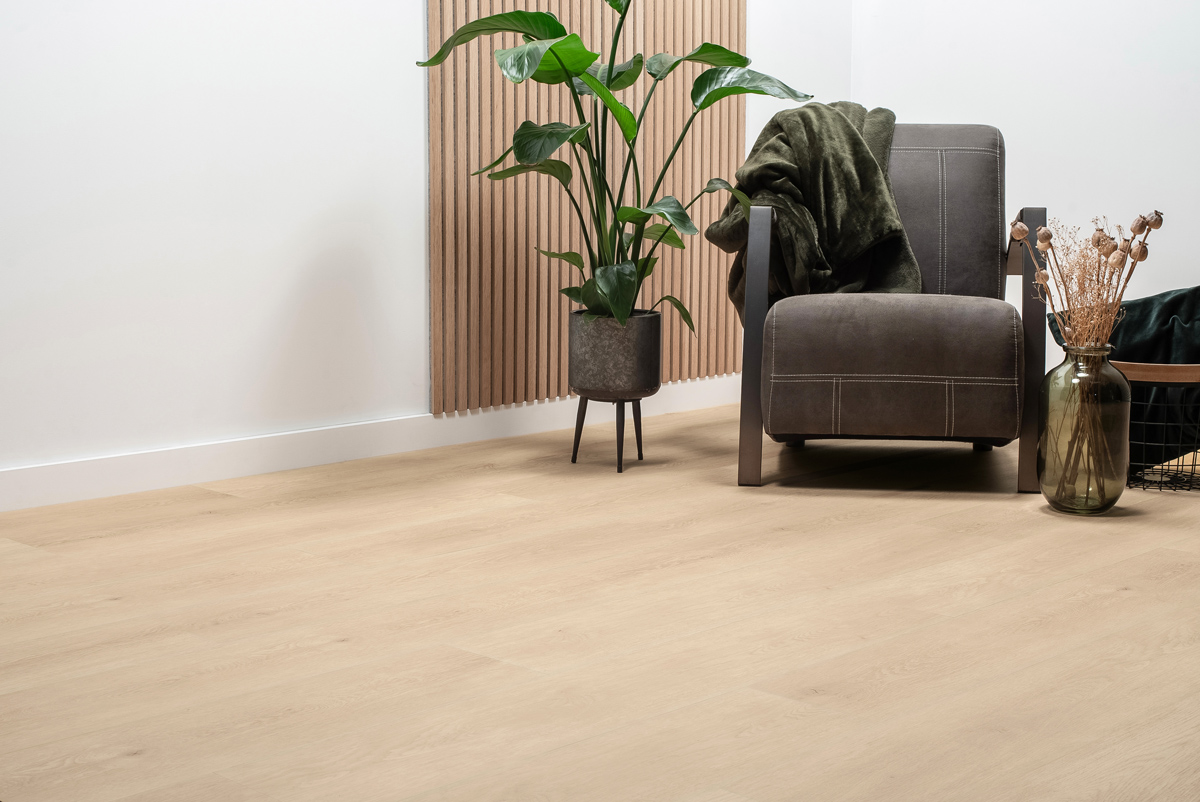
Ensuring perfect conditions for your floor is crucial if you want to enjoy it for as long as possible. When buying a new floor, it’s essential to consider how to maintain the right conditions for a Rigid Click Vinyl floor. In this blog, we’ll explain what you need to think about and why it’s so important.
Rigid Click Vinyl floors require a special underlay to ensure the heavy rigid click vinyl planks last as long as possible. By using the right underlay, you can keep your Rigid Click Vinyl, Herringbone Rigid Click Vinyl or Tile Rigid Click Vinyl floor in optimal condition for an extended period.
Why should you use an underlay?
Using an underlay is essential when installing a rigid click floor. Without an underlay, the floor will be in direct contact with a hard surface that does not provide enough give. This can cause the floor to creak and the click connection to become irreparably damaged when you walk, jump, or exercise on it. A subfloor acts as a cushion between the floor and the hard surface, protecting the floor and supporting the click connection. This support is essential for maintaining the quality of the floor. In addition to protecting the floor, an underlay can also reduce noise levels with a 10 dB certificate, provide insulation, and work well with underfloor heating.
Can you lay a floor without an underlay?
No, you cannot install a floor without an underlay, unless it’s a glued-down floor like Dryback Vinyl flooring or Oak Parquet flooring. We strongly advise against installing a floor without an underlay.
Why use an underlay with Rigid Click Vinyl?
Let’s be clear: having an underlay under a Laminate, Parquet floor, or Rigid Click Vinyl floor is crucial! The weight of the floor places pressure on the connection, making it essential to protect the click connection on the floorboards. A good underlay is also crucial when selecting a rigid click vinyl floor. This article will focus on why a subfloor is important with rigid click vinyl and what to consider when choosing a suitable underlay.
 Rigid Click Vinyl features a rigid core, also known as a stone mineral interlayer. As a result, it is important to install these floors over a good underlay. The most crucial factor to consider when selecting a subfloor for a rigid click vinyl floor is its compressive strength, measured in kPa. This value indicates how much compressive strength is required to deform a particular material. Interestingly, machines, not bodybuilders, measure this strength. So why is compressive strength so significant for a rigid click vinyl floor? Watch the video to find out!
Rigid Click Vinyl features a rigid core, also known as a stone mineral interlayer. As a result, it is important to install these floors over a good underlay. The most crucial factor to consider when selecting a subfloor for a rigid click vinyl floor is its compressive strength, measured in kPa. This value indicates how much compressive strength is required to deform a particular material. Interestingly, machines, not bodybuilders, measure this strength. So why is compressive strength so significant for a rigid click vinyl floor? Watch the video to find out!
An underlay with a high kPa value

Choosing an underlay with a high kPa value ensures that the click connection remains stable and receives enough counter pressure. Rigid click vinyl floors are relatively heavy compared to wide Laminate, so constant pressure on the connection could cause it to break. To prevent this, use Floer Rigid Click Vinyl Underlay, which has an extremely high kPa value of 400. If you’re looking for a strong underlay, choose one with at least a 300 kPa value to ensure the quality of Floer. But that’s not all!
Floer tip!
By combining the Floer Rigid Click Underlay with one of the Floer Rigid Click Vinyl floors, you will receive a guarantee of at least 20 years.
Underlay for upstairs flat
Are you considering installing a rigid click vinyl floor in an upstairs flat? While it is possible, there are two important factors to consider. First, ensure that the underlay you use has the correct kPa value. Second, take into account the subfloor’s sound reduction. In the Netherlands, there is a legal requirement for a minimum sound reduction for upstairs flat floors. This requirement stipulates that the floor, in combination with the underlay, must be able to guarantee a minimum sound reduction of 10 dB Llin. Outside of the Netherlands, the dB value is given in Lw. Therefore, always select an underlay with a sound reduction of at least 10 dB Llin. You can ask your Floer dealer for the best advice on this matter.
Do I need to consider a 10dB requirement if I want to lay this floor in a bedroom of my own house? No! This requirement only applies to upstairs houses. Therefore, when laying a floor on either an upstairs or downstairs floor in your own home, you do not need to take this requirement into account.

Everything you need to consider
Let’s explain everything again. An underlay serves as a cushion between the subfloor and the boards. This cushion absorbs the impact the floor receives every time someone walks on it, ensuring that the click connection remains stable and does not break. The underlay can also reduce noise. For a click vinyl floor, the subfloor must have a certain kPa value to provide sufficient support to the click connection. The Floer Rigid Click Underlay is perfect for this and, when used with a rigid click vinyl floor, comes with a 20-year manufacturer’s warranty.
Planning to install click vinyl flooring on an upper floor? Ensure that your underlay offers sufficient noise reduction and high compressive strength. By law, the requirement for noise reduction is set at 10 dB Llin.
Discover the range
In addition, to rigid click vinyl flooring, there are plenty of other flooring options to choose from! Wide Laminate flooring with a convenient click connection is among the most popular choices. If you prefer vinyl flooring, consider the special and 100% safe wide Vinyl. If you’re a fan of the herringbone pattern, you can choose from Herringbone Vinyl or its bigger brother, the Whalebone Vinyl. XL herringbone floors are also available in other materials, such as Oak Herringbone Parquet. Not sure which herringbone floor to choose? Read our 4 tips on choosing a herringbone floor here! For even more tips on keeping your vinyl flooring in optimal condition, read our guide on how to remove scratches from a vinyl floor.






